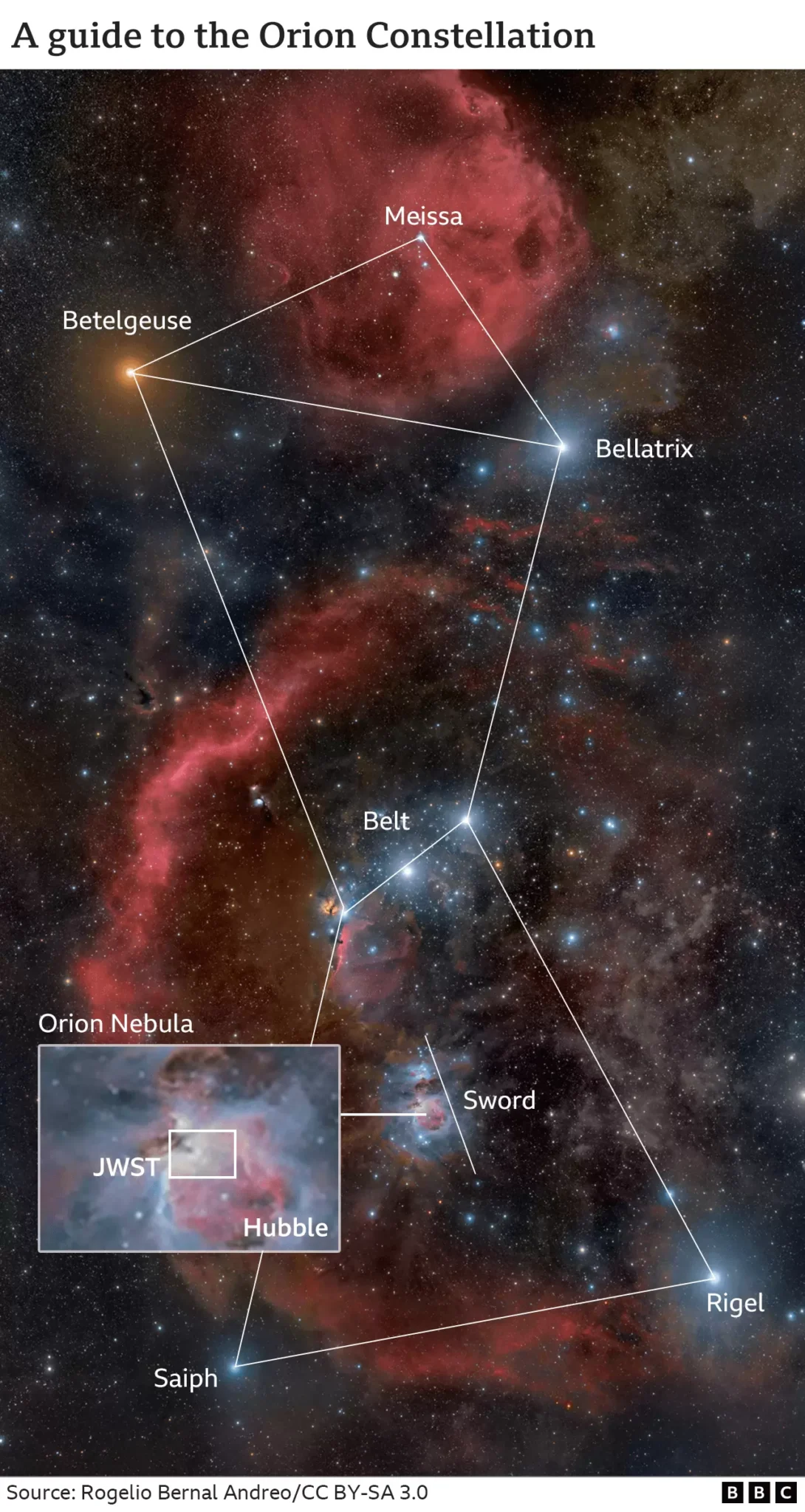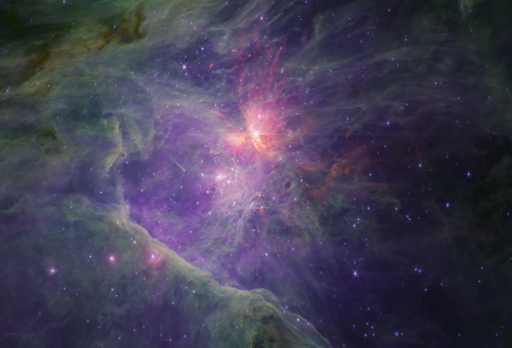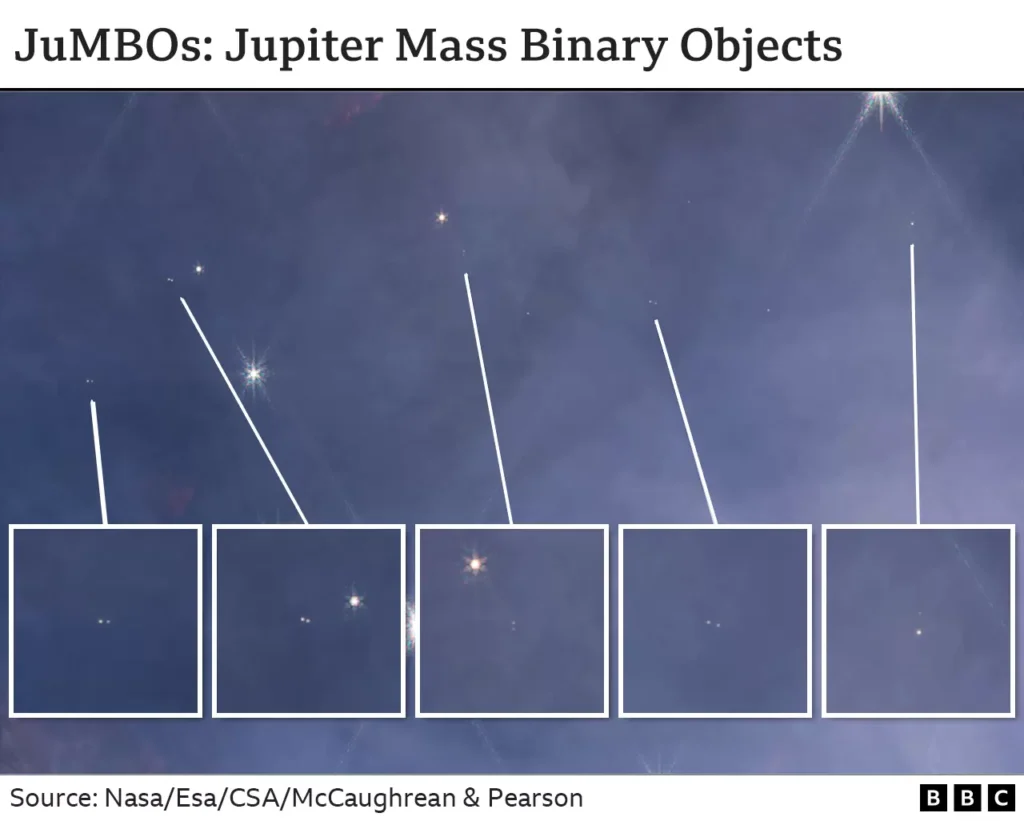Astronomers working with the James Webb Space Observatory (JWST) have published another series of impressive images of a famous object. This time the telescope photographed the Orion nebula.
Nearest star maternity hospital
The Orion Nebula is a huge accumulation of gas and dust, in the depths of which thousands of new luminaries are being born right now. This is one of the regions of active star formation closest to Earth. 4.5 billion years ago, our Sun also formed inside a similar “stellar maternity hospital”.

Due to its proximity to Earth (it is located at a distance of 1,350 light-years from the Solar System), the Orion Nebula can be seen in the sky with the naked eye. It is a very popular object for observations, both by amateur astronomers and the world’s most powerful observatories, including JWST. It can observe details of the Nebula that are inaccessible to other telescopes thanks to its huge mirror and the ability to capture infrared radiation, which, unlike visible light, passes through dust.
Infrared portrait of the Orion Nebula
In total, the researchers have published two portraits of the Orion Nebula. The first consists of 2,400 images taken by a NIRCam camera through filters that transmit near-infrared waves. It demonstrates the gas, stars and newborn luminaries of the system filling the nebula. The latter are surrounded by dense disks of gas and dust, in which planets may be forming.

Some of the protoplanetary disks are destroyed by the powerful ultraviolet radiation of the most massive stars in the region. It is especially worth highlighting the Trapezium — a star cluster located in the center. Its five largest stars have a mass of about 15-30 solar and provide the main contribution to the illumination of the surrounding nebula.

The second image is made up of 712 images taken using filters that transmit longer waves. The gas and dust components of the Nebula are visible on it with greater sensitivity in the infrared range, but with a lower spatial resolution than in the short-wave image.

The nebula is mostly filled with ionized gas, which is shown in purple, while in the vicinity there is a mixture of dust and molecular gas, shown in red, brown and green. You can see a cavity “cut out” in the gas clouds by the radiation of massive stars in the left part.
Consequences of a stellar collision
In addition to the entire Nebula as a whole, James Webb’s images also allow us to examine in detail a number of its constituent objects and structures. Among them are the “fingers”. This unusual formation consists of gas ejected during an explosion that occurred approximately 500–1000 years ago in the center of a dense molecular cloud. According to scientists, it could have been caused by the collision of two young massive stars.

The “fingers” have a predominantly red color, which indicates the emission of hydrogen heated as a result of the explosion. Near the tips of the “fingers”, the radiation turns green due to iron atoms, and in some places where the gas is the hottest, it is even white.
Free-floating planets
In addition to the “fingers”, JWST also photographed many free-floating objects, the size of Jupiter, which are not associated with any star. Astronomers use the term JuMBO (Jupiter Mass Binary Objects) to denote them. The most intriguing thing is that they seem to move in pairs. In total, JWST photographed more than two dozen pairs of JuMBO.

According to one version, these objects were formed in those regions of the nebula where the density of matter was insufficient for the formation of full-fledged stars. Another possibility is that they were originally formed around stars and then, as a result of various interactions, were thrown into interstellar space. So far, astronomers consider the second scenario more likely.
According to https://www.esa.int
Follow us on Twitter to get the most interesting space news in time
https://twitter.com/ust_magazine
